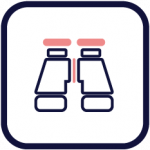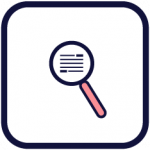Summary
Authentic assessment strategies bring us closer to what we really want to know about our learners’ progress and achievements. More importantly, they help our learners become aware of their acquired skills and gain confidence in their ability to apply these competencies after graduation. In this module, we illustrated the steps involved in authentic assessment design, implementation and evaluation. We saw that an authentic assessment strategy could include a variety of assessment methods with varying degrees of “authenticity”. As you begin to plan your own authentic assessments, we encourage you to explore the sample assignments submitted by your colleagues in the companion resource to this course. Start with a simple authentic task and build upon it gradually as you gain experience and familiarity with these assessment methods. Connect with your institution’s Teaching and Learning staff for additional support and guidance. Remember that your learners’ will appreciate the time, effort, and care you put in to developing your assessments.
Key Takeaways
- Authentic assessments measure the application of knowledge, higher-order thinking and transferable career-related skills.
- Incorporate authentic assessment and principles of authenticity as part of a balanced assessment strategy.
- Authentic assessment design involves four main steps: identifying learning goals, selecting an authentic task, defining criteria, and developing a rubric.
- Use scaffolding and peer review / feedback strategies to support student success.

Explore Further
eCampusOntario. (n.d.) Authentic Assessment. Supporting Teaching and Learning into the Future.
Lombardi, M. M. & Oblinger, D. (2008, January). Making the Grade: The Role of Assessment in Authentic Learning. EDUCAUSE Learning Initiative.
Rousseau, P. (2018). Best practices in Alternative Assessments. Ryerson University, Learning & Teaching Office. [PDF]

References
Anderman, E. M., & Midgley, C. (2004). Changes in self-reported academic cheating across the transition from middle school to high school. Contemporary Educational Psychology, 29(4), 499–517. https://doi.org/10.1016/j.cedpsych.2004.02.002
Center for Innovative Teaching and Learning, Indiana University Bloomington. (n.d.). Authentic Assessment. https://citl.indiana.edu/teaching-resources/assessing-student-learning/authentic-assessment/index.html
Chaktsiris, M., McCallum, K., Luke, R., Cukier, W., Patterson, L., Garreffa, N. & Gooch, E. (2021, March) Is the Future Micro? Unbundling learning for flexibility & access. Is the Future Micro? [PDF] https://micro.ecampusontario.ca/wp-content/uploads/2021/03/Is_the_Future_Micro-1.pdf
Lombardi, M. M. & Oblinger, D. (2008, January). Making the Grade: The Role of Assessment in Authentic Learning. EDUCAUSE Learning Initiative. https://library.educause.edu/resources/2008/1/making-the-grade-the-role-of-assessment-in-authentic-learning
McCabe, D. & Pavela, G. (2004). Ten (Updated) Principles of Academic Integrity: How Faculty Can Foster Student Honesty. Change: The Magazine of Higher Learning, 36:3, 10-15, DOI: 10.1080/00091380409605574
Mueller, J. (2018). Authentic Assessment Toolbox. http://jfmueller.faculty.noctrl.edu/toolbox/index.htm
Sardo, C. & Sindelar, A. (2019). Scaffolding Online Student Success. Faculty Focus. https://www.facultyfocus.com/articles/online-education/scaffolding-online-student-success/?st=FFdaily;s=FF190327;utm_term=FF190327
Simkin, M. G., & McLeod, A. (2010). Why Do College Students Cheat? Journal of Business Ethics, 94(3), 441–453. http://www.jstor.org/stable/40784704
University of Northern Iowa. (n.d.). Student Learning Outcomes Assessment. https://assessment.uni.edu/assessment-processes
Villarroel, V., Boud, D., Bloxham, S., Bruna, D., & Bruna, C. (2019). Using principles of authentic assessment to redesign written examinations and tests. Innovations in Education and Teaching International, 1-12. doi:10.1080/14703297.2018.1564882
Walvoord, B. & Anderson, V. (1998). Appendix B: Types of assignments and tests. In Effective Grading: A Tool for Learning and Assessment. (pp. 193 – 195). San Francisco: Jossey-Bass
Wiggins, G. (2020). 27 Characteristics Of Authentic Assessment. https://www.teachthought.com/pedagogy/27-characteristics-of-authentic-assessment/

